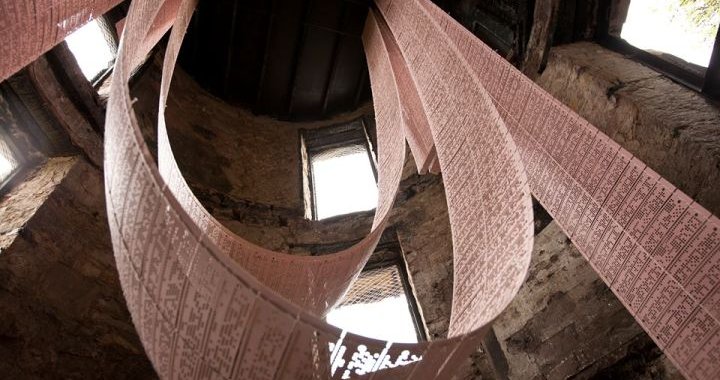
GENERATION: 25 years of Contemporary Art in Scotland
Erlend Clouston
08/07/2014
Writing to a friend in the autumn of 1898, the unemployed sea captain Joseph Conrad reported gloomily on his fruitless round of Glasgow shipping companies: "The fact that I am notorious as a novelist is a handicap on the Clyde, I fear." Hard-headed and cold-blooded, Scots have never been easily associated with the processes of the imagination.
Until now, perhaps: 'Generation' is a nation-wide flaunting of indigenous contemporary art that straddles the country until early winter. The scale is stupendous: 100 artists in 60 venues, from the Shetland Islands in the north to the banks of the Solway river in the south. In global terms it is unique. It is as if Yves Klein had flicked a pen full of International Blue at a map of North Britain and decreed an installation at every blotch.
In a sense it is shock therapy for the country. ”Contemporary art is one of the great success stories not known in Scotland," Simon Groom, director of the Scottish National Gallery of Modern Art," told me. The average Scot can reel off their compatriots' achievements in film, music and theatre, but will be ignorant of the fact that galleries from San Francisco to Tokyo vie for Scottish product. Since 1996 the Turner Prize, Britain's pre-eminent trophy for contemporary art, has finished up on six Scottish mantelpieces; three of the four nominees for this year's award were trained in Glasgow. The Scottish Pavilion at the Venice Biennale is a magnet for trend-spotters.
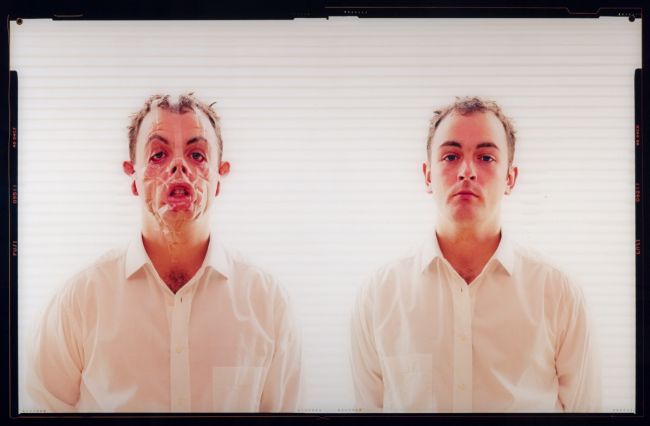
Douglas Gordon. Monster Reborn. Copyright Douglas Gordon/VG Bildkunst, Bonn 2012. Courtesy of the Artist and the National Galleries of Scotland
The explanation for this efflorescence of creativity is two-fold. Scotland's remoteness from the distorting compass of London dealers has encouraged original practice. "Ambition has been driven by creation and freedom, not the market," Groom believes. Marginally more cynically, Andrew Patrizio, professor of art history at Edinburgh University and former exhibitions organiser at the uber-metropolitan Hayward Gallery, cites "the timidity of London and the machinations of the art world. I saw the London thrall for everything coming from Glasgow at the time." And the Caledonian stars-to-be, Douglas Gordon, Christine Borland, Martin Boyce, Claire Barclay, Richard Wright, etc, were not slow to exploit their exoticism. “English artists have told me they were in awe of the way Glaswegian artists could work a room," Patrizio added.

Richard Wright. The Stairwell Project. © The Artist. Image courtesy of The Artist and The Modern Institute/Toby Webster Ltd, Glasgow
The chutzpah could be traced back to the extraordinary teaching regime at the Glasgow School of Art's Environmental Art Department, which broadly involved giving students both their heads and a good time. "We get drunk together, party and travel abroad together," David Harding, the departmental head, wrote in 2004. To questing minds instinctively skeptical of conventional fine art, this was a passport to uncharted aesthetic territory. The successive advent of fax machines and the Internet enabled Scots, for once, to plug into international culture without packing a suitcase and heading south.
'Generation' begins, literally and figuratively, with a re-assembling of the late Steven Campbell's drole 1990 installation, ‘On Form and Fiction'. Taking up the first room on the left in the Scottish National Galleries' Academy building on Edinburgh's Princes Street, this is an immersive panoply of sepia-ink drawings that mischievously hi-jacks figurative painting in the cause of conceptualism, all to the tune (from a period-piece gizmo) of Jane Birkin's breathy 'Je t'Aime'. Inspirational to Campbell's peers and admirers, the installation was excavated fortuitously from a London storage facility. "We weren't sure what we would find," Groom recalled. "Even his widow didn't know what was there."
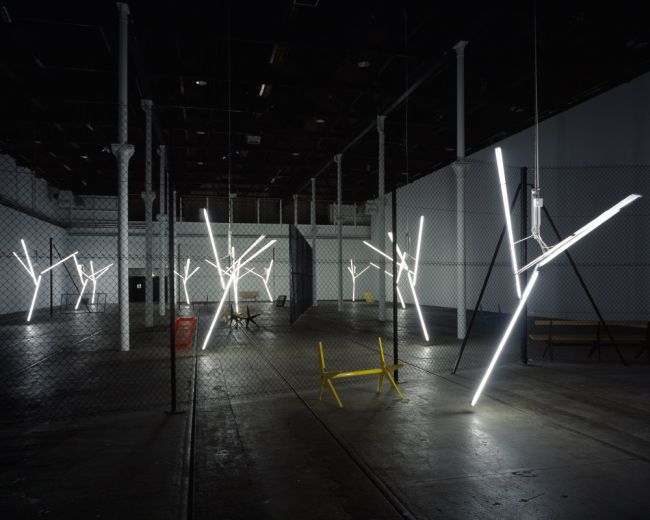
Martin Boyce. Our Love is Like the Flowers, the Rain, the Sea and the Hours. © The Artist. Courtesy of The Artist and The Modern Institute/Toby Webster Ltd, Glasgow
From here, ‘Generation’ spirals out fantastically in style as well as geography. Video proliferates, but its revolutionary credentials are now a little jaded. Among the more unusual media competing for attention are vinyl tape (Jim Lambie), Afghan carpentry (Craig Coulthard), human skin (Ross Sinclair), fluorescent tubes (Martin Boyce), and pianos – dropped (Raydale Dower) and automatic (Katie Paterson and Torsten Lauschmann, ; the latter’s lament ‘What else can we do when there are only buttons to press?’ might be the credo for the whole shebang). The presumed truth of the conventional bust is upended by Christine Borland’s ‘blind’ commissioning of six studies of Josef Mengele, and Jonathan Owen’s mischievous reworking of Victorian graven images. Katie Paterson has also sent a fragment of meteor into orbit via UPS air-freight; it crashes back into Edinburgh’s Ingleby Gallery in mid-August. Almost half the the exhibitors are women, an astonishing rebuke to the past chauvinism of Scottish painterdom. Interestingly, for the year of an independence referendum, raw Scottishness is scarcely visible; it would take a bitter anglophile to deny the charm of Ross Sinclair’s idealized and astro-turfed Highland landscape, complete with the artist warbling ‘Annie Laurie’ (Scottish National Gallery of Modern Art). An honourable mention, via Katy Dove, goes to Scotland’s brilliant Oscar-winning and pioneering animator, Norman McLaren.
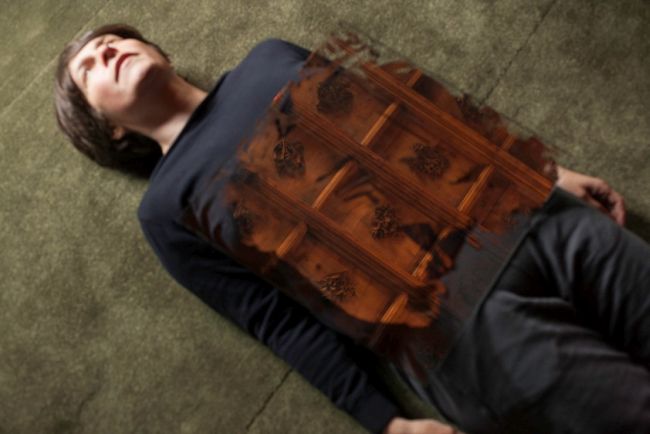
Claire Barclay. Underside\Disturbance. © The Artist. Photography by Ruth Clark
Deliberate prominence has been given to brilliant draughtsmanship, for example Lucy Mackenzie’s trompe l’oeil, Charles Avery’s fabulist universe (both SNGMA), and Alan Michael’s shimmering hyper-realism (Glasgow Tramway). “The whole point is to open it up to as many people as possible,” declared Groom. The guidebook comes with a helpful glossary. Wherever possible, blackboards and i-pads are supplied to record visitors’ comments. Similar care has been taken to spread the stars around. Video-meister Douglas Gordon (‘24 Hour Psycho’, etc) presents work in northern Thurso as well as Edinburgh and Glasgow; Borland (Turner nominee 1997) can be seen in Kilmarnock, Dumfries and Ayr, and Claire Barclay (unsettling sculpture and prints) in Arbroath. Simon Groom particularly recommends Lorna Macintyre’s installation at Mount Stuart on the Isle of Bute, and Zoe Walker and Neil Bromwich’s Neolithic fantasy at the Pier Arts Centre, Orkney. “There is no sense of hierarchy,” Groom insisted. “On the website everyone has equal billing.” Conrad’s ghost will be disappointed to learn that Stephen Hurrel’s residency at Timespan, Helmsdale, will not feature his 1999 work, ‘Zones - An Audiology of the River Clyde’.
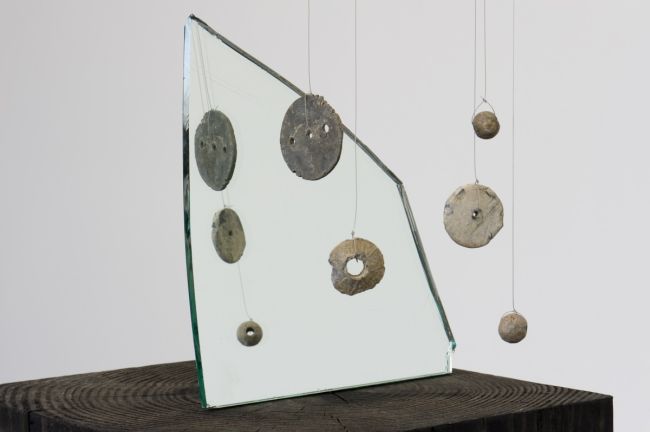
Lorna Macintyre. The Saturn Return. © Lorna Macintyre. Courtesy of The Artist and Mary Mary, Glasgow
It has cost a million pounds to stage ‘Generation’, the money coming principally from Creative Scotland, the Scottish Government’s arts funding agency. The initiative is applauded by Prof. Patrizio: “For good or bad, Scotland can say to artists ‘We’re supporting you, there’s some national heft going behind this’.” Will it be worth it? Tourists coming to the country will certainly be surprised, and impressed. A more elusive, yet vital, target are the natives. In crude terms, they still rarely ‘get’ contemporary art. “The home market has improved over the past 15 years, but we have to work very hard around the world to keep the wheels on,” sighed Richard Ingleby. Two major galleries, Doggerfisher (Edinburgh) and Sorcha Dallas (Glasgow) have closed in recent years. Outside a handful of big names, an artist’s average earnings in Scotland hover around £ 10,000. The alleged philistines this time are not Clyde ship-owners but the management of the country’s plump financial institutions. Cautious by nature, they are grimly conventional in their decorative tastes. For Prof. Patrizio, this is a dereliction of duty: “Jim Lambie is selling to art galleries in California, but a ‘Friend’ of the National Gallery will never have heard of him.” He paused: “In Davos, it is a badge of honour to be supporting your local culture.”